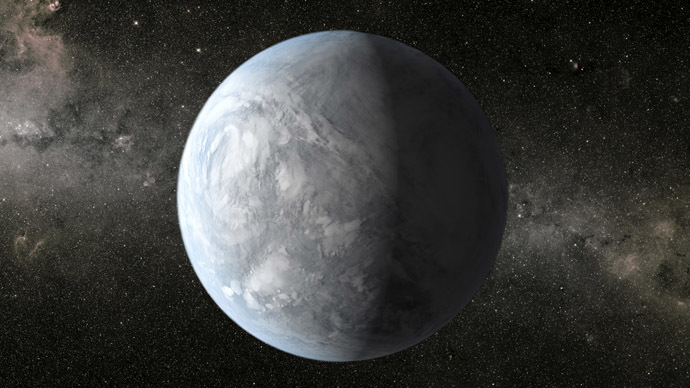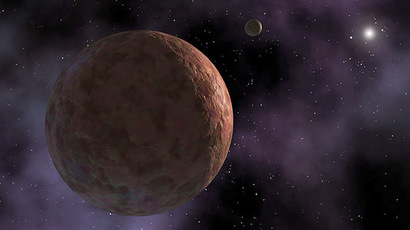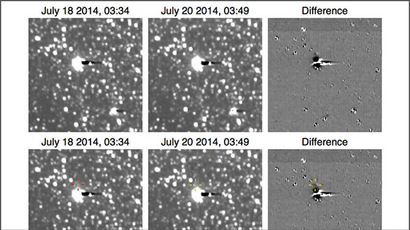Water discovered on smaller-than-ever distant exoplanet

Water vapor has been discovered on an exoplanet the size of Neptune – smaller than any previous discovery – paving the way for astronomers to use similar methods to identify Earth-like planets far beyond our solar system.
This marks the first time that an exoplanet smaller than the size of Jupiter has been revealed to feature traces of water, according to the findings first published in the latest edition of the journal Nature.
Analyzed using the Hubble Space Telescope, the Spitzer Space Telescope and the Kepler space observatory, the composition of the exoplanet’s atmosphere was found to be primarily hydrogen along with roughly 25 percent water vapor.
READ MORE: Astronomers get new alien hunting tool
Known as HAT-P-11b, the exoplanet located 124 light years away was not described as a potentially Earth-like habitat by the study’s lead author, Jonathan Fraine, but the fact that water vapor was discovered at all was seen as a hopeful sign for the future.
“Although this planet is not classically habitable, it reveals to us that when we find Earth 2.0, we will be able to use this technique, transmission spectroscopy, to understand its atmosphere and determine the quality of life available on its shores,” Fraine told the Guardian.
Typically, warm planets smaller than Jupiter – such as HAT-P-11b – have been extremely difficult to analyze due to the abundance of clouds, which kept light from breaking through and giving scientists little to effectively examine, at least with current technology. Since there was no such interference on this planet, researchers were able to clearly determine that water vapor existed in the atmosphere.
“Water is the most cosmically abundant molecule that we can directly observe in exoplanets, and we expect it to be prevalent in the upper atmospheres of planets at these temperatures,” Fraine added to Space.com.“Detecting it is both a confirmation of our theories and revealing for the bulk of the spectrum that we can observe.”
If scientists can use similar methods to find water, though, they also believe that other elements necessary for life to thrive could be detected. Methane, which is primarily produced by living things on Earth, is one thing scientists are looking for – and a tool to more effectively identify it was unveiled earlier this summer.
The upcoming successor to the Hubble – the James Webb Space Telescope – could also make it much easier for scientists to look for water and other compounds. It will feature much more advanced equipment, meaning that it will be able to pick up signals much softer than what the Hubble can do right now.
Eliza Kempton from Iowa’s Grinnell College believes that the new telescope may even be able to help scientists analyze planets that more closely resemble the size of Earth.
“By first pinpointing and studying those planets that provide a clear window into their atmospheres,” she told the Guardian, “researchers will ultimately be able to extend the search for water and other molecules to smaller planets, perhaps even Earth-sized planets, with the James Webb telescope and beyond.”














